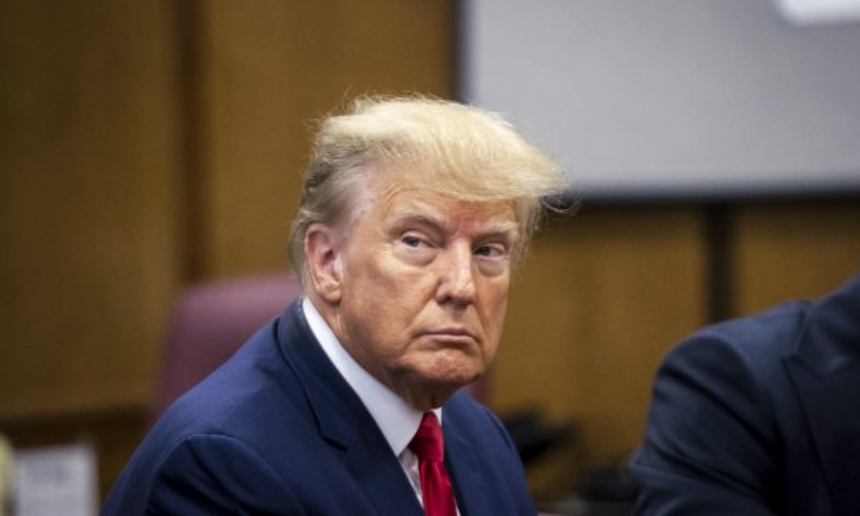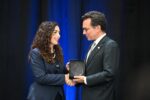Advisors to President-elect Donald Trump have publicly and privately revealed various proposals aimed at ending the war in Ukraine. According to an analysis by Reuters, based on statements and interviews with individuals close to Trump, large parts of Ukrainian territory may be handed over to Russia for an indefinite period.
The proposals from three key advisors, including retired General Keith Kellogg, who is expected to be Trump’s assistant and special envoy for Ukraine and Russia, share several common elements, including removing Ukraine’s NATO membership from the agenda.
Trump has repeatedly promised during his campaign that he would end the nearly three-year conflict within 24 hours of taking office on January 20, if not sooner, but he has yet to specify how he would accomplish this.
Analysts and former National Security Council officials have raised concerns about whether Trump can fulfill such a pledge given the complexity of the conflict.
However, together, the statements from his advisors suggest possible outlines for a peace plan under President Trump.
Ukrainian President Volodymyr Zelensky, facing a lack of forces and increasing territorial losses, has hinted that he might be open to negotiations. Although he still seeks NATO membership, he said this week that Ukraine might find a diplomatic solution to reclaim some of its occupied territories.
But President Putin may not be willing to engage with the incoming U.S. leader, say analysts and former senior U.S. officials, as the Ukrainians are at a major disadvantage, and Putin may seek to acquire more territory.
“Putin is in no rush,” says Eugene Rumer, a former U.S. intelligence analyst for Russian affairs.
According to him, the Russian leader has shown no willingness to give up his conditions for a ceasefire and the start of talks, such as Ukraine’s renouncement of NATO membership and the surrender of four regions that Putin claims are part of Russia but are not fully controlled by Moscow—a demand that Kyiv has rejected.
Rumer suggests that President Putin may be looking to buy time to gain more territory and see what concessions Trump may offer at the negotiating table.
Reuters reported in May that President Putin was prepared to stop the war with a negotiated ceasefire that recognized current front lines, but he was ready to continue the war if Kyiv and the West did not respond.
Russia already controls all of Crimea, which it unilaterally annexed from Ukraine in 2014, and has since taken around 80% of the Donbas region, consisting of Donetsk and Luhansk, as well as more than 70% of the Zaporizhzhia and Kherson regions, and smaller parts of Mykolaiv and Kharkiv.
More Than a Plan
Until last week, Trump had not yet assembled a working group to draft a peace plan, according to four advisors who declined to be identified.
Instead, some advisors have floated ideas in public forums and have relayed them to Trump, according to sources.
In the end, however, a peace agreement is likely to depend on direct personal engagement between the three leaders—Trump, Putin, and Zelensky—say advisors.
Kremlin spokesman Dmitry Peskov said, “We cannot comment on individual statements without having an idea of the plan as a whole.”
Trump’s spokeswoman, Karoline Leavitt, pointed out that President Trump has said he would “do what is necessary to restore peace and restore America’s strength on the world stage.”
A representative for President-elect Trump did not respond to a question about whether he still plans to resolve the conflict on his first day in office.
Ukraine’s government did not respond to a Reuters request for comment.
A former Trump National Security advisor, involved in the transition process, said there are three main proposals: one from Kellogg, another from Vice President-elect JD Vance, and a plan presented by Richard Grenell, former Director of National Intelligence.
The proposal from General Kellogg, along with former National Security Council official Fred Fleitz, and presented to Trump earlier this year, envisions a “freeze” on current front lines.
Kellogg and Fleitz did not respond to requests for comment. Reuters was the first to report on their proposal.
Trump would send more U.S. weaponry to Kyiv only if Ukraine agreed to peace talks. At the same time, he would warn Moscow that Washington would significantly increase aid to Ukraine if Moscow rejected talks. Ukraine’s NATO membership would be put on hold.
According to this proposal, Ukraine would also be offered U.S. security guarantees, which could include increased arms supplies, once the agreement was accepted.
In June, in an interview with British station Times Radio, Sebastian Gorka, a prospective deputy National Security Advisor, said that President Trump had told him he would force Putin to enter negotiations by threatening unprecedented weapons deliveries to Ukraine if Putin refused.
When contacted by phone, Gorka referred to Reuters as a “trash news agency” and declined to make further comments.
Vance, who as a senator opposed aid to Ukraine, put forward another idea in September.
He told journalist Shawn Ryan that a possible deal would likely include a demilitarized zone along current front lines, which would “be heavily fortified” to prevent further incursions by Russia. Under his proposal, Ukraine would be denied NATO membership.
Trump’s representatives said he was not ready to comment.
Grenell, former ambassador to Germany under the Trump administration, has supported the idea of creating “autonomous zones” in eastern Ukraine during a debate organized by news agency Bloomberg in July, but did not provide further details. He also suggested that Ukraine’s NATO membership was not in America’s interest.
Grenell, who did not respond to a request for comment, does not yet have a post in the new administration, although he continues to advise Trump on European matters, a senior foreign policy advisor to Trump told Reuters.
He was one of the few individuals who participated in the September meeting between Trump and Zelensky in New York.
Possible Oppositions
Analysts and some former National Security officials believe that some elements of the proposals could be opposed by President Zelensky. His victory plan envisions an invitation for NATO membership, with support from European allies and some U.S. lawmakers.
Last week, Ukraine’s Foreign Minister sent a letter to NATO counterparts urging them to invite Ukraine to join at Tuesday’s meeting.
Some European allies have expressed readiness to increase aid to Ukraine, while President Joe Biden continues to send arms. This could reduce President Trump’s influence in pushing Ukraine to the negotiating table.
Kellogg’s plan, which envisions increased aid for Ukraine if Putin does not come to the table for talks, could face opposition in Congress, where some of Trump’s closest allies oppose additional military aid to Ukraine.
“I don’t believe anyone has a realistic plan to end the conflict,” said former intelligence officer Rumer. /VOA







